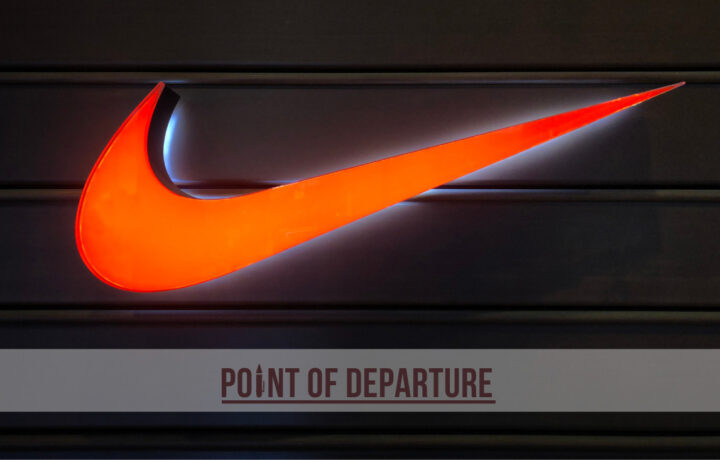“Just do it.” – Nike motto
Battlefield to Boardroom. It’s a common euphemism in business intended to stir the competitive juices, to inspire the troops in the trenches to new heights. Just as military leaders are often accused of leaning too hard into sports metaphors to describe warfare, business leaders tend to do the same with military analogies.
In business, where the aggressive – I’ll avoid using the term violent in this context – execution of strategy is often what determines the winners and losers in terms of profit and loss. There are few business executives who don’t keep a copy of The Art of War alongside their favorite Dale Carnegie classic. They defend their market share while attacking their rival’s position. They gather intelligence on their opponents so they can target them more effectively. They set their sights on the end goal and maneuver minefields along the way. And they never give up the company without a fight.
In 1977, when Nike was still largely a fringe brand of running shoe, the company’s marketing director, Rob Strasser, circulated a memo that captured co-founder Phil Knight’s core leadership principles. To some it might have seemed a bit over the top for a fledgling shoe company. But, if Knight knew one thing, it was going to take the spirit of the offensive – even if the concept itself might have been foreign to him at the time – to vault Nike into a position of strength in a highly competitive industry.
THE SPIRIT OF THE OFFENSIVE
The concept of taking the fight to the enemy is a precept as old as warfare itself. While some might argue whether Sun Tzu focused his writing on winning or avoiding war, one fact remains unquestioned: when it came time to fighting, Master Sun was in it to win it.
The offensive is more than a principle of war. It’s a way of thinking about competition that in many ways transcends the art of war. It captures the imagination, inspires the will to fight on in the face of adversity, and fuels a “never say quit” attitude that dictates the terms of battle. It drives initiative, opportunity, and success in a way that nothing else can.
The spirit of the offensive is a subject that has been documented, debated, and – perhaps not unironically – defended. Writing in a 1922 Proceedings article, Lieutenant Commander H.H. Frost noted, “The spirit of the offensive may and should be present at all times, either in absolute or limited offensive operations.” Frost understood that the spirit of the offensive wasn’t a transitory concept, but something that had to be institutionalized to fully realize. When the United States Army embraced AirLand Battle doctrine in 1982, the spirit of the offensive was paramount: “Our operations must be rapid, unpredictable, violent, and disorienting to the enemy.”
Underpinning it all was leadership. “Improvisation, initiative, and aggressiveness… must be particularly strong in our leaders.”
PHIL KNIGHT’S TOP TEN
Phil Knight’s memo ultimately became known as the Nike Manifesto. It was a top ten list perfectly suited for a young company about to take on the giants of industry. The memo invoked the spirit of the offensive in a timeless call to battle. It was a charge for leaders across the company to galvanize for combat, to prepare to take the fight to the enemy. Or, in this case, other shoe companies.
1. Our business is change.
In an adapt or die industry, change is a catalyst for growth. You either get ahead of the power curve or it runs you over.
2. We’re on offense. All the time.
The spirit of the offense is founded on the idea that you set the terms of battle, you take the fight to your opponent. For Nike to be a trendsetter, they had to pursue their goals relentlessly and with impunity.
3. Perfect results count – not a perfect process. Break the rules: fight the law.
There is a time and place for process. Focus on the outcomes and push the envelope on creative problem-solving. Sometimes, it’s better to beg forgiveness than ask permission.
4. This is as much about battle as business.
Competition is not a gentlemanly endeavor over martinis and shuffleboard. It’s a knife fight, whether you’re battling for market dominance or you’re very survival.
5. Assume nothing. Make sure people keep their promises. Push yourselves, push others. “Stretch the possible.”
For Phil Knight, leadership was about asking the right questions, holding others accountable, and pushing the envelope. Never be satisfied with the status quo.
6. Live off the land.
You’re never going to have all the resources you need, when you need them. Resourcefulness and resilience are the calling cards of competition. Use them.
7. Your job isn’t done until the job is done.
At the risk of leaning into an outdated euphemism about operas and divas, suffice it to say that Knight understood the role of will in competition. It’s all about commitment and accountability. You fight until the final bell rings.
8. Dangers: bureaucracy, personal ambitions, energy takers vs. energy givers, knowing our weaknesses, don’t get too many things on the platter.
If you’re going to succeed in life, in business, in battle, you have to know where the obstacles lurk and how to power through them. Don’t allow human vulnerability or ego to get in the way of the end goal.
9. It won’t be pretty.
The path to success usually looks clear on paper. It rarely is. Be ready for everything that’s going to come your way and stay focused on what matters.
10. If we do the right things we’ll make money damn near automatic.
Put in the hard work, stress the fundamentals, and leave no details unchecked.
Just do it.




